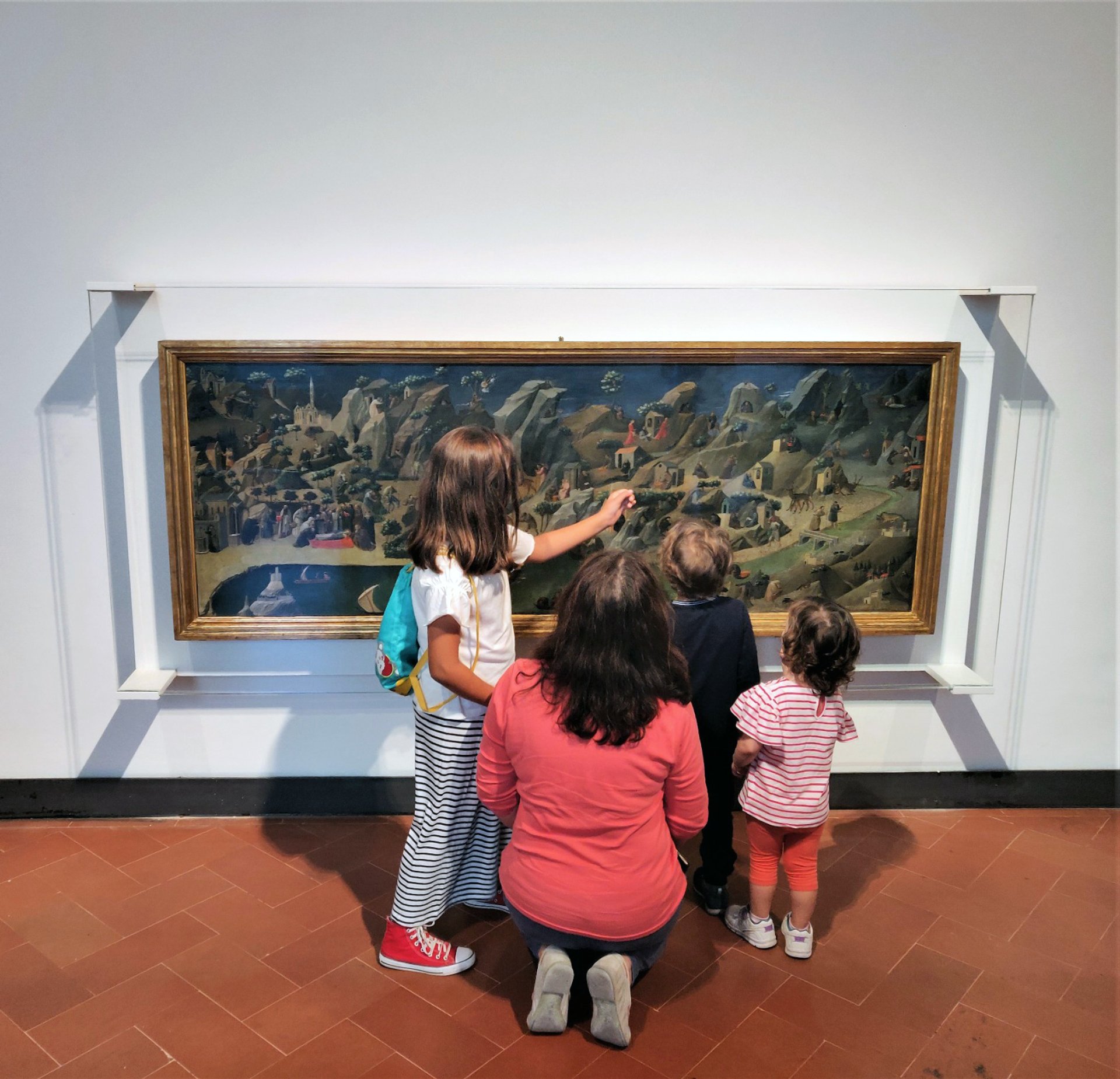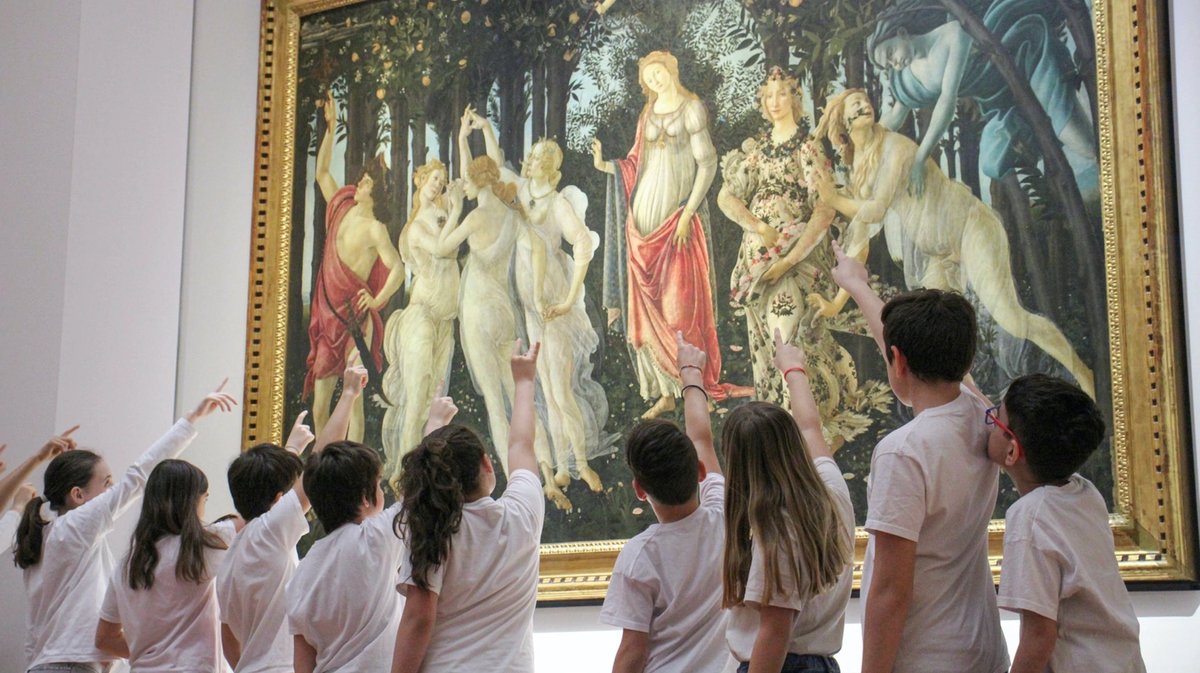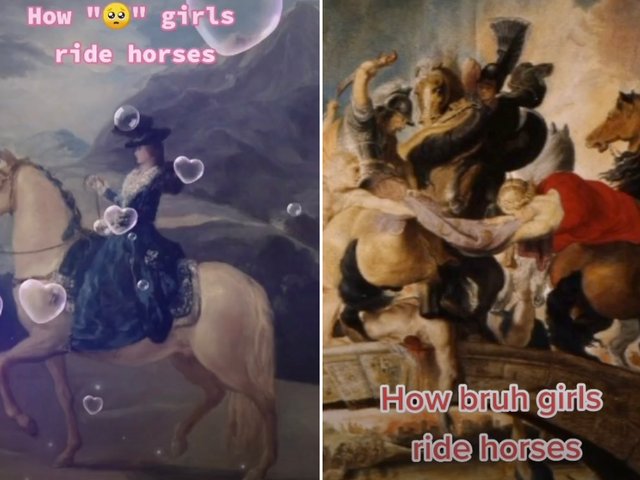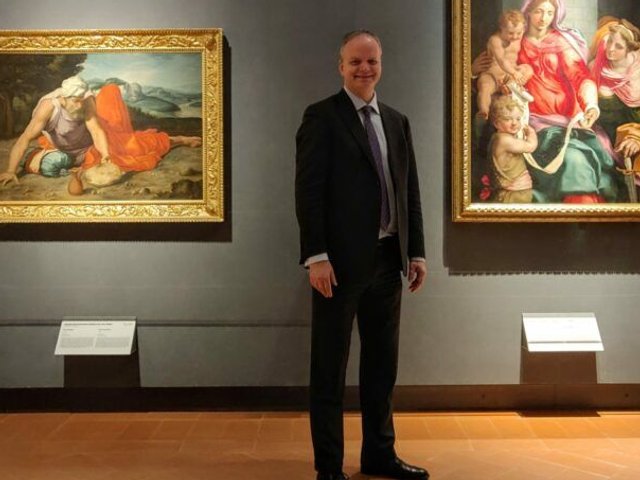Children may wince at the thought of being dragged around the world's biggest museums, but the Uffizi have redoubled efforts to guarantee their youngest visitors leave satisfied. Unveiled on Thursday, UffiziKids is the eye-catching new brand incorporating the museum's existing children's initiatives with a few novelties thrown in. Innovations include a colourful new web page and a squad of roving representatives tasked with responding to tiny tots' niggling queries.
About 1,150 children visited the museum in 2019, according to Uffizi staff. By rebranding its kids output, the museum hopes to convince many to return. "If you communicate with children in the right way you can open their eyes to the wonder of art," Silvia Mascalchi, coordinator of the Uffizi's Education Department, tells The Art Newspaper. "We want to make art normal for children, so that when they're older they'll think: 'I’m heading to the city, I'll pop into the museum.'"
Children are "the masters of asking difficult questions", Mascalchi adds, so the Uffizi has appointed over 40 guards as kids representatives who will be their point of contact during visits. A "global first", Malschalchi believes, the voluntary scheme is open to all of the museum's guards, with some of the team’s “youngest and most knowledgeable” members being the first to sign up. The representatives, whose first day on the job was Friday, carry out their roles alongside their normal duties of "monitoring and welcoming". They have been given special collar pins so that children can easily identify them.

In 2019, the Uffizi lowered the hang of Beato Angelico's richly detailed Tebaide (around 1420) to children's eye level
Emblazoned with a large smiley face (the UffiziKids logo), the new web page features existing children's material such as printable worksheets for themed routes—on monsters, flowers and predelle (the lower panels of altarpieces)—and information on child-friendly exhibitions. A misura di Bambino. Crescere nell'Antica Roma, a featured archaeological exhibition that opened on 22 November, explores ancient Roman conceptions of childhood through art. While conceived primarily for adults, the exhibition includes kids features such as simplified label descriptions, comic strips and works placed at children's height. In one associated initiative, children can play popular Roman games in the Boboli Gardens.
Launched by Maria Fossi Todorow in 1970, the Education Department (known as the Didactic Section until 2015) organises school visits, guided tours for families and special assistance for disabled people. “Fossi Todorow said children should look at the predelle, because they contain entire worlds to marvel at,” Mascalchi explains. Literally bringing art down to kids' level remains central to the department's approach. In 2019, the museum hung Beato Angelico's richly detailed Tebaide (around 1420)—a favourite with children—at 65cm from the ground. Asked which painting will be lowered next, Maschalchi replied: "I'd like the choice to come directly from the children. Perhaps the new representatives will tell me which works they like most."




